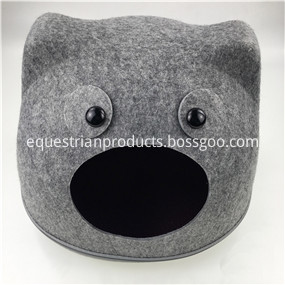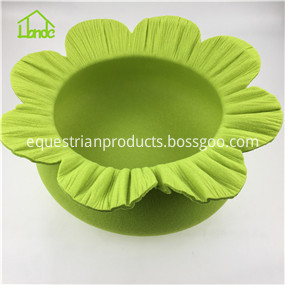If you let consumers describe the perfect light source characteristics, then you may hear in their descriptions that they need the lowest energy, adjustable light output and color, long use time and so on. The minimum input energy refers to the efficient conversion of input power to lumen output, which is called efficacy; adjusting the light output is related to dimming that reduces the brightness of the light, or the color adjustment of the lighting device can be added to simulate the daytime and nighttime conditions; and by Adjusting the bias current flowing through the LED can maintain light output during a long service life.
Incandescent lamps have low energy efficiency and a short service life; sodium lamps provide few color options and have a short service life; fluorescent lamps have fewer dimming options and have a short service life. High-brightness LEDs claim to have good energy efficiency, long service life, easy color selection and dimming control, and no ultraviolet (UV) rays. Thanks to the intelligent design of the control device or LED drive electronics, these claimed advantages have now been realized. The intelligent LED driver can adjust the brightness attenuation during the use period, provide driving characteristics to adjust the color, and replace the LED binning to obtain the desired color and brightness: by using spectral tuning for different LEDs in the system The required color and brightness.
Spectral tuning contrast sorting
Spectral tuning mixes the spectral energy distribution of several kinds of LEDs, for example, mixing red, green, and blue LEDs appropriately can produce white light. This RGB combination is also used to generate light of almost all colors. If the LED driver is not designed to adjust a different set of LEDs, then the designer must choose from the sorted LEDs to produce a specific color. Sorting is the process by which manufacturers classify LEDs based on luminous lumens and colors. The example in Figure 1 shows a set of industry-standard LED "classification standards."

Figure 1: LED classification criteria on the chromaticity diagram.
The classification is shown by the rectangular area plotted on the chromaticity diagram. A group of LEDs included in the same category will have similar color and brightness characteristics. However, in a large office or factory environment that contains many lighting devices, different categories may still cause uneven light color, which is obvious in a group of large lighting devices. The sorted LED design will not provide a way to change the color of the lighting equipment; and a group of LEDs of different colors use feedback to tune the spectral characteristics of different LEDs in the system, which can establish a compensation lighting system in the office environment, thus making the entire space The light is even. Spectral tuning can also compensate for other effects, such as natural light at the side of the room with the window facing outward or corridor lighting reflected into the room.
Another effect of LEDs is color shift, resulting from changes in LED forward current. Figure 2 shows a set of industry LED color curves with forward current.

Figure 2: LED light units classified by application.
The LED driver can be designed with a strict constant current (CC) output tolerance. However, tightening the CC tolerance will increase the cost of the LED driver. Since the forward current passes through a group of LEDs, a lower-cost solution is for designers to use a feedback system to adjust the color deviation of the LEDs and compensate for color changes through feedback.
Sorting LEDs usually has an impact on manufacturing, leading to increased LED procurement costs. Because LED sorting settings are specific, some LED drivers may still not match the forward bias current settings of many classified LED applications. In addition, temperature effects and life degradation effects can cause changes in the color of lighting equipment.
Application of feedback in spectrum tuning
The following will propose a lighting device that automatically adjusts color and brightness to illustrate a feedback control scheme that can offset the effects of system changes. Color sensors and microcontrollers are used to process sensor inputs. For example, the color sensor uses a photodiode, uses a non-organic three-way color filter, provides excellent stability and extremely low drift in terms of temperature and aging changes, and the color filter can be designed to implement the spectral sensitivity curve of the human eye ( CIE1931).
The principle diagram of the closed-loop spectrum tuning light source is shown in Figure 3.

Figure 3: Spectral tuning light source.
The control loop uses a microcontroller as shown. The control loop uses sensors to measure brightness and color, and uses PWM signals to regulate the current in the LED string. Using the PWM input signal, FAN7346 can control the current in a single LED string. The power supply may be a power factor correction (power factor correction) pre-stage, followed by an LLC DC / DC secondary stage, in order to power multiple LED light strings, as shown in FIG. 4. The power supply can also be an existing design, using FAN7346 to control the feedback to the power supply. Alternative designs can use three power converters (30W / 10W / 10W), each controlling each group of LED strings, using white light, green light and amber light to generate a white light-based tuning system, or using the same power supply Three kinds of light strings are used to "mix" three kinds of LED light strings of red light, green light and blue light to realize a wider color tuning range. LED colors do not need to be sorted; low-cost LEDs with the performance required for lighting applications can be selected.

Figure 4: Power supply for spectrum tuning light source.
System example
An example of a system for tuning white light in an office environment is established here. Three flyback PFC power supplies are operated in parallel. The main power supply with an output power of up to 30W drives the main white LED light string, and the two additional power supplies each provide up to 10W. The power is used for LED light strings containing amber and green LEDs, which provides a total power of 50W. Figure 5 shows the light source design at full power. The color sensor is located in the middle of the light source array, with the front side facing down to achieve the correct measurement of light color and light intensity.

Figure 5: Spectral tuning light source at full power.
The tester could not see the difference in color or brightness. Figure 6 shows that the light source is dimming. It should be noted that because of high ambient light conditions, such as sunlight from a window, some light sources are actually turned off.

Figure 6: Spectral tuning light source brightness decreases.
Conclusion of this article
As can be seen from the examples, LED systems using spectrum tuning provide consistent color characteristics in an office or factory environment. Spectral tuning allows color compensation for sunlight or other light sources that may affect ideal brightness and color control. The feedback system can also compensate for the effects of aging or drift related to LED life and color shift. Because spectral tuning feedback can be used to control color, this also eliminates the cost impact of strictly sorting LEDs. Other advantages of the examples mentioned above include calibration, implementation of pre-protection features, and setting of safe lighting conditions to balance the light output and the electrical energy from the backup battery to illuminate the required escape route. Aiming at a specific device to control the entire system, the dimming can be controlled remotely through a wireless interface.
Felt Pet Nest is popular for little cat and dog.which can be customized color and shape. if you have your own style, we can also produce for you. Pet Nest keep your pet warm and help your house clean.



Pet Nest
Pet Nest,Comfortable Dog Nest,Medium Dog Nest,Various Dog Nest
Hebei Honde Group , https://www.horseequipmentfromchina.com